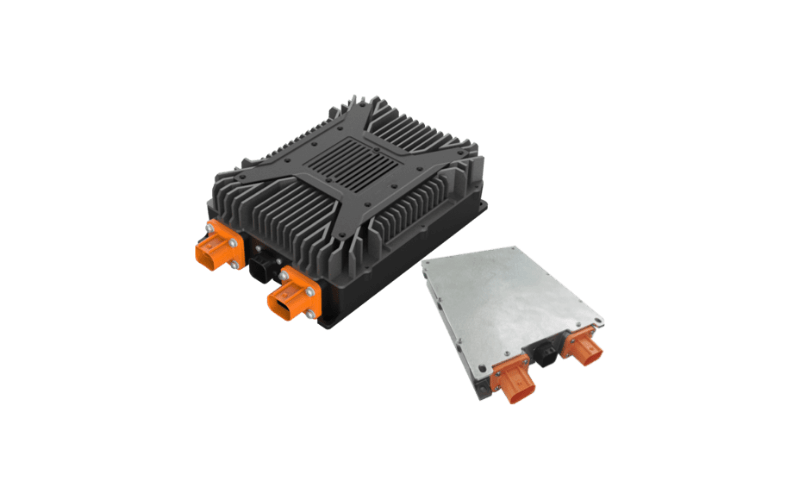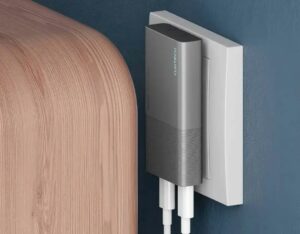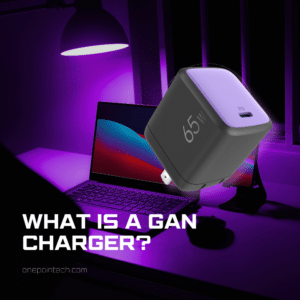A relatively new battery technology, li-ion batteries have disrupted the traditional energy storage landscape and reshaped how we power our devices. From our personal gadgets to electric vehicles and from residential to grid-scale solar, lithium-ion batteries have become the primary battery technology to rely upon. According to the US Energy Information Administration, “lithium-ion technology was used in more than 90% of the installed power and energy capacity of large-scale battery storage operating in the United States at the end of 2019.”
While popular, they are still secondary batteries and must be charged efficiently and safely. That’s where li-ion battery chargers step in. A good li-ion battery charger is designed to not only provide optimal charging voltage (and current) but also incorporate safety features to prevent batteries from getting overcharged, overheated, and other safety hazards.
In the lines below, we will take a closer look at li-ion battery chargers, the most popular topologies, and what to keep in mind while choosing chargers that would align with your needs. Whether you are a battery designer, manufacturer, supplier, or casual user, understanding the fundamentals of li-ion battery charging would help you optimize your energy storage systems and meet your business goals.
Not all li-ion batteries are designed the same, and neither are the chargers they need. From chemistry to capacity to application, li-ion batteries come in various types. Here is a breakdown of the factors you must consider when choosing your li-ion battery charger.
Battery Compatibility
When choosing a li-ion battery charger, it’s important to consider the compatibility of the charger with your battery. Two primary factors to consider are voltage & chemistry and capacity and charging time.
Voltage and Chemistry
Li-ion batteries come in various voltages and chemistries—lithium iron phosphate (LiFePO4), lithium manganese oxide (LiMn2O4), and lithium cobalt oxide (LiCoO2) are some of the commonly used chemistries. While all of them are li-ion batteries, not all chargers are compatible with every type of battery.
To choose the right charger, check the specifications of your battery to ensure that the charger you choose pairs well with the voltage and chemistry of your battery. Charging a battery with the wrong voltage or chemistry can cause permanent damage to the battery, reduce its capacity and lifespan, or even create a safety hazard.
Similarly, your charger’s communication capabilities also matter—they have to be superior. Speaking of which, One Pointech’s li-ion battery chargers come with 485 or CAN protocols, allowing it to integrate with a wider energy storage system seamlessly.
Capacity and Charging Time
Secondly, different batteries have different capacities, influencing their charging time and the type of charger they need. The capacity of a battery is measured in ampere-hours (Ah), indicating the amount of energy it can store. Check the specifications of your battery to determine its capacity and the recommended charging time.
Make sure the charger you choose can handle the capacity of your battery and charge it within the recommended time. For example, if you have a 1000mAh battery, a charger with a 500mA charging current will take approximately 2 hours to charge the battery fully. Overcharging a battery or using a charger with insufficient capacity can reduce the lifespan and performance of the battery—it can also cause it to fail prematurely.
Charging Requirements
When selecting a li-ion battery charger, you cannot ignore the charging requirements of your battery. Three main factors to consider are charging speed, the number of batteries, and safety features incorporated in the battery.
Charging Speed
For some users, this may not be a decisive factor. But if you are a business with tight schedules, the charging speed may affect your goals. A fast charger can help increase productivity and reduce downtime, more so if you have multiple batteries that need charging. Depending on your needs, you may require a charger that can charge your battery quickly. On the other hand, you may need a charger that provides a slower, more gentle charge to preserve battery life.
The charging speed is measured in amperes (A) or milliamperes (mA). Which one you should choose finally boils down to your needs and goals.
Number of Batteries
Secondly, how many batteries do you want to charge? Some chargers are designed to charge only one battery at a time, while others can charge multiple batteries simultaneously. If you have multiple devices that use li-ion batteries, a charger that can handle more than one battery can save you time, hassles, and needless to say, money.
Safety Features
Lastly, consider the safety features of the charger. Some li-ion battery chargers come with built-in safety features such as over-voltage protection (OVP), over-power protection (OPP), over-current protection (OCP), short circuit protection (SCP), over-temperature protection (OTP), brown-out protection (BOP), reverse current protection (RCP), etc. These safety features prevent damage to your battery and reduce the risk of accidents.
If your li-ion battery charger doesn’t have built-in overcharge protection, it can cause the battery to heat up and even explode, while short-circuiting can damage both the battery and the charger.
Portability and Convenience
Next, we have portability and convenience. These two factors are especially note-worthy if you are a business with large charger battery banks.
Size and Weight of the Charger
The size and weight of the charger play a significant role in its portability. If you need to charge batteries on the go, for instance, while traveling, a compact and lightweight charger will make more sense for your needs. A lightweight and portable charger is also convenient for employees who work in the field or have to carry multiple chargers with them.
On the other hand, if you have large batteries, the size and weight will be large.
Charging Options
Some li-ion battery chargers come with multiple charging options, such as USB, wireless charging, or wall outlet charging, giving you more flexibility and control. You have to be careful here—while some chargers offer various charging options, their performance may decrease when changing the variables.
Durability and Build Quality
A sturdy and durable charger can withstand drops and impacts, ensuring that it lasts longer and does not need to be replaced frequently. On the other hand, a charger that is manufactured with low-quality material or doesn’t have protection against rugged conditions is bound to be replaced sooner.
Talking about durability, you have to check the quality of the material, the ambient temperature it can work at, and finally, the water resistance. The latter must be at least IP65.
User-Friendliness
Not everybody understands the technical details involved in battery charging. If you—or your customers, in case you are a business—are not too tech-savvy, consider user-friendly li-ion chargers. A user-friendly charger with easy-to-understand instructions can help reduce errors and ensure that customers can use it without assistance.
Charging topologies used in Li-ion battery chargers
This is the technical part but does require attention. When it comes to li-ion battery chargers, several charging topologies (charging methods) are used, each with its unique characteristics and applications.
The constant current (CC) topology is the most commonly used charging topology employed in li-ion battery chargers. It involves delivering a constant current to the battery until it reaches a specific voltage level, typically around 4.2V per cell. This topology is efficient and suitable for fast-charging applications. CC is generally used in portable electronic devices like smartphones, tablets, and laptops.
Another method is constant voltage (CV) topology–it is typically used in conjunction with the CC topology. Once the battery voltage reaches the recommended level, the charger switches to a constant voltage mode, where the voltage is kept steady, but the charging current gradually decreases until the battery is fully charged. This topology is suitable for charging large-capacity batteries, such as electric vehicles, power tools, and industrial equipment. CV method has been proven to play a role in maintaining battery health in the long term.
There is also pulse charging topology. It involves delivering short bursts of high current to the battery followed by periods of rest. The pulse charging method is useful in reviving batteries that have been left unused for a long time, as it can break down sulfation and restore the battery’s capacity. Its most commonly used applications include, among others, standby power supplies and backup systems.
Price and Value
Now, the part that may break some deals—the price and value for money. There are different types of chargers available in the market, and each type comes with its own price point. You may get some chargers at an unbelievably lower price, while some would cost you more. However, it’s important to consider not only the upfront cost of the charger but also the long-term value it offers. For instance, a higher-priced charger with a higher efficiency may save money in the long run by reducing electricity costs or simply having a longer lifespan.
It’s also important to remember that the cheapest option may not always be the best option. A low-quality charger may cause damage to the battery, reducing its lifespan and performance and resulting in the need for more frequent replacements. Even if it comes with a higher price tag, investing in a quality charger may be a more cost-effective solution. It’s important to strike a balance between price and value when choosing a li-ion battery charger.
The Brand’s Commitment to R&D
Finally, does the brand you choose invest heavily in its research and development? While many overlook this, it is still an important determinant. When you choose a brand that keeps itself up-to-date with all the latest advancements in the tech sector, you ultimately get reliable products with a higher value for money.
At One Pointech, we are particularly committed to research and development, enabling us to be a step ahead of our competitors. For example, all our li-ion chargers are state-of-the-art—they come with the latest soft switching resonance technology. Since there is AC to DC conversion in li-ion chargers, some losses may occur. However, with our soft resonance (SR) switching technology, this switching is soft, lossless, and guarantees a higher efficiency of up to 96%.





